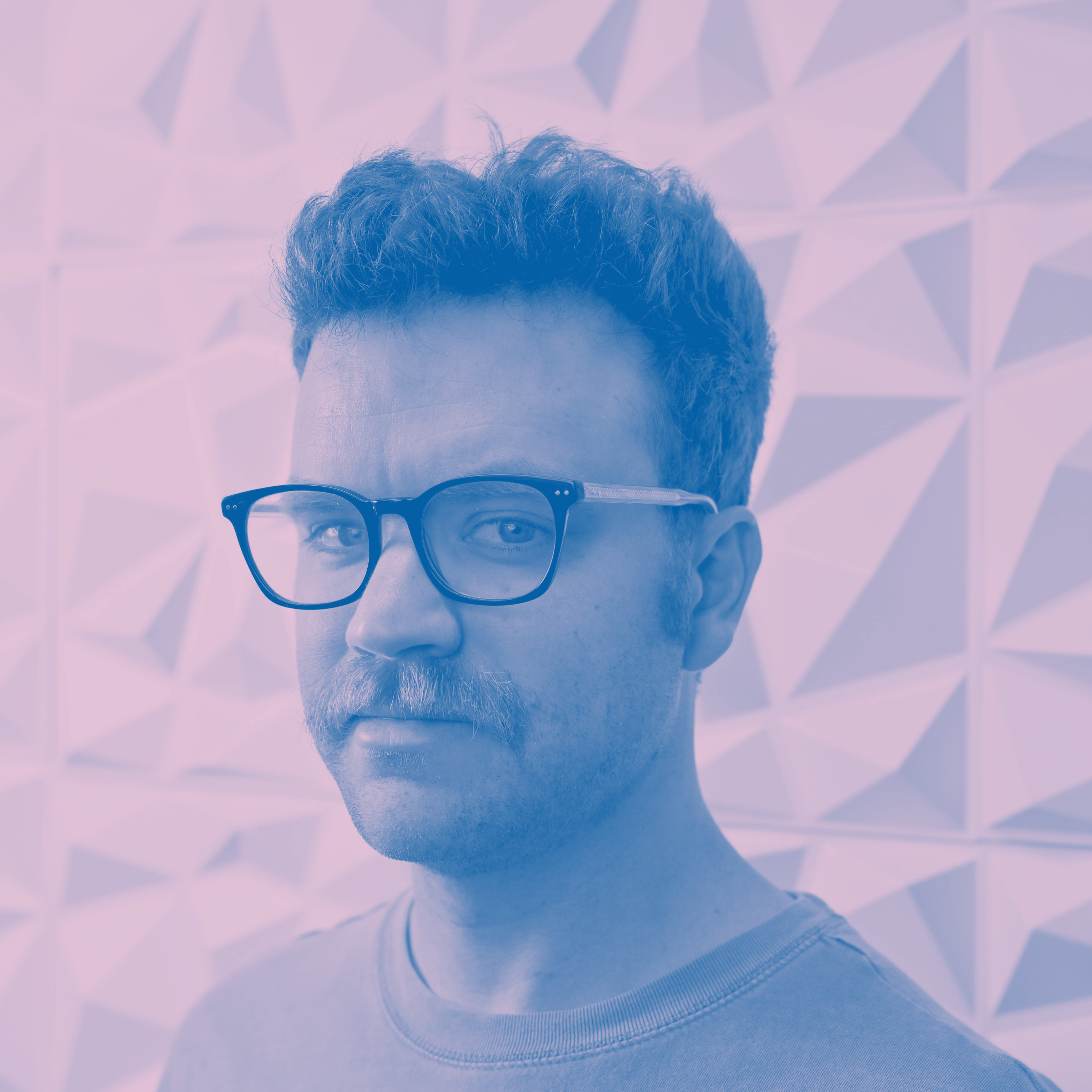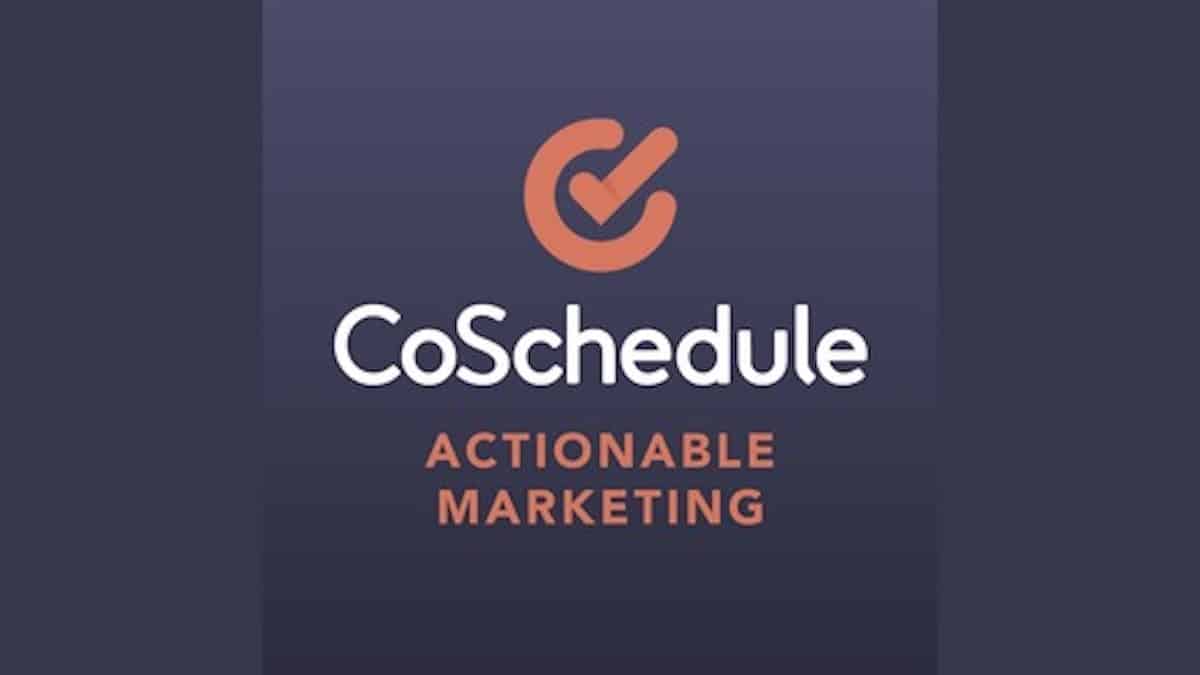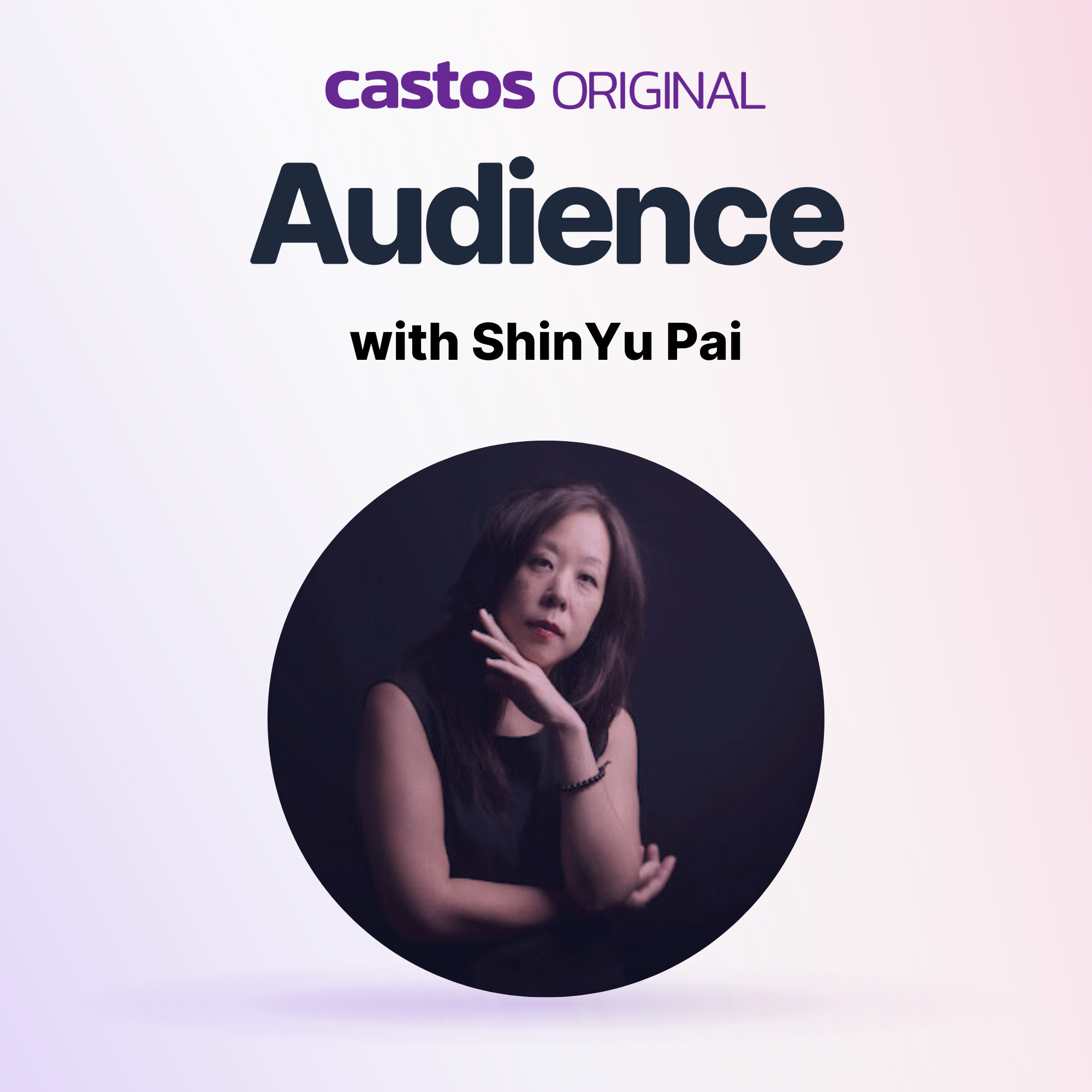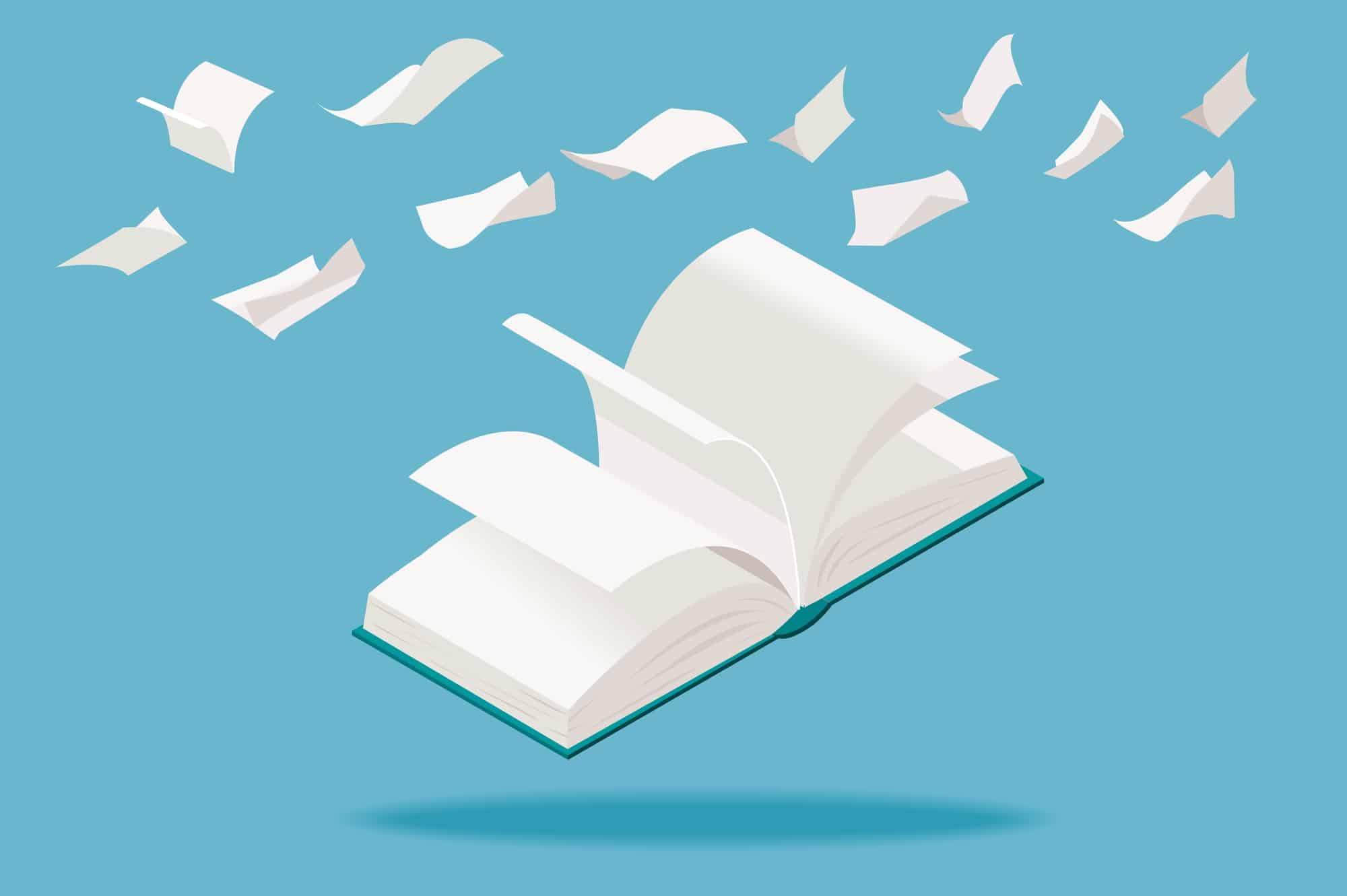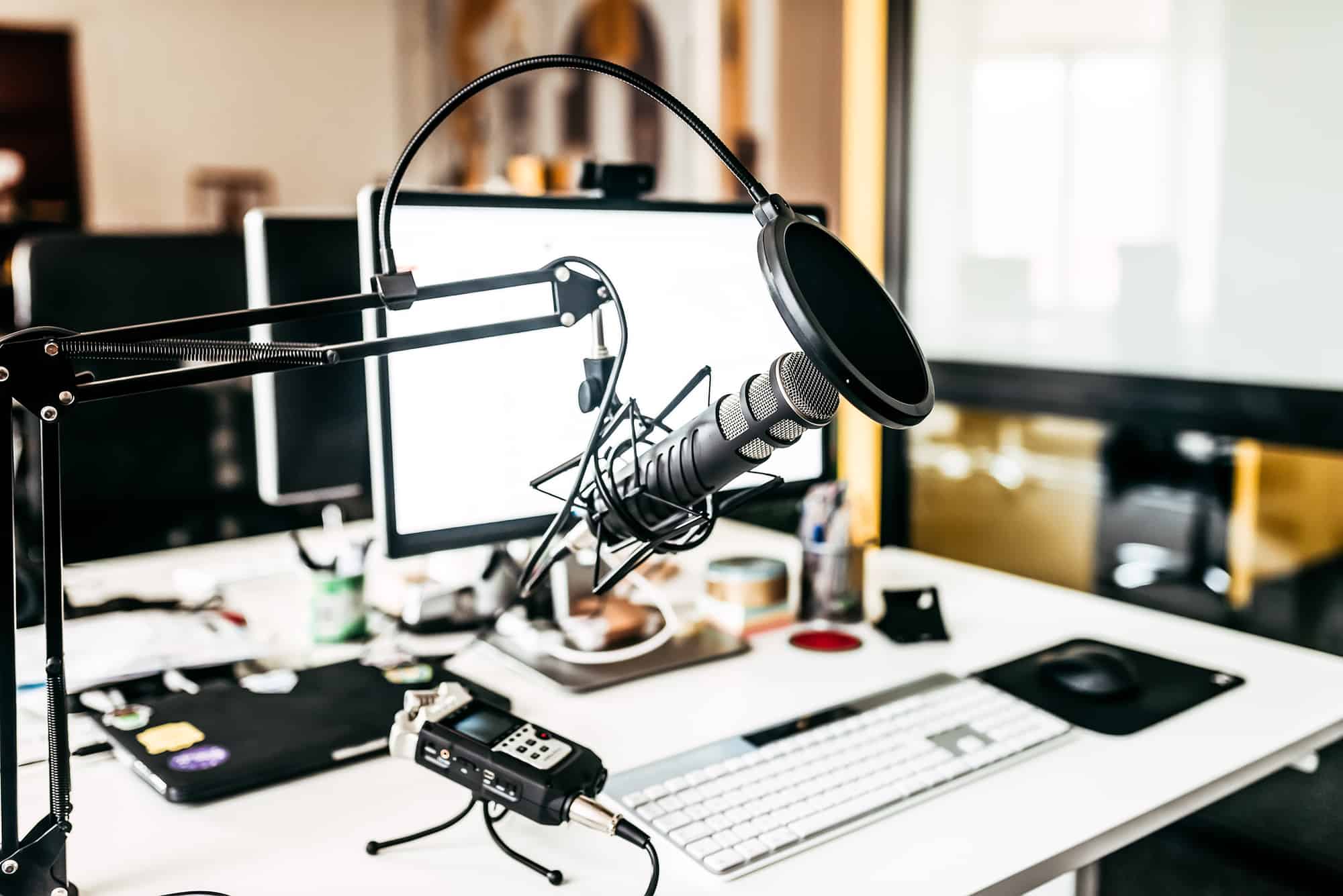Episode Transcript
Speaker 0 00:00:06 Hello. Hello, and welcome back to audience. I'm your host Craig Hewitt. And our last episode with Jack reciter from the dark net diaries, we talked a lot about the craft of telling a good story and of creating really compelling content for your audience. And in Jack's podcast specifically, he does this through a very heavily narrated interview style podcast. And here today, we're going to talk through the process that we'd like to follow for creating podcast episodes like that. And I think if you listen to Jack's podcast, you'll see that he does a lot of the same things and he takes them to the level. That is, that is really fantastic. And I think is something that a lot of us can emulate. And the goal in this episode here today is to give us all the tools and the mindset and the framework for how we can go about creating podcast episodes like jacks, and like are crafting the narrative episode that we're going to pull some excerpts from in this episode and talk about how we did that and how you can do that as well.
Speaker 0 00:01:09 So I think the first thing to talk about is what the heck is a narrative style podcast. Uh, and I think the answer here is it's an interview show with the host, interjecting their thoughts and opinions and clarifications around what a guest is saying. And so what this typically looks like is it's a mix of an interview show and a solo show where the host is talking directly to the audience and not necessarily to the interviewee or the guest of the show. Uh, we'll talk a lot about how this is done, technically both before recording, during recording and in the post-production process, but just to give a kind of a glimpse of what this looks like. Here's an excerpt from one of our podcast episodes that uses narration to enhance and clarify what is happening between me as the interviewer. And one of our guests in a previous episode,
Speaker 1 00:02:04 Being prepared is really important though, of course, spontaneity, and having that sort of natural conversation is really important as well. So
Speaker 0 00:02:12 Do your homework ahead of time, prepare yourself and your guest for the episode. You're about to record and then let the conversation take its own natural course and let the guest to tell their story like they want to, oftentimes this is where the biggest surprises and the most interesting content will come out organically. And naturally
Speaker 1 00:02:30 A good example was we were interviewing Bexley Mason from Bleacher report.
Speaker 0 00:02:36 And so I mentioned that this affects all the work done before and interviewed during an interview and in post-production when you're editing and mixing the podcast, let's talk through each of those kind of here in step. So before the interview occurs, a lot of homework is needed on our part as the interviewer to really know our guests and the subject matter that we're going to be talking about. So we'll take the dark net diaries as an example, uh, Jack does a lot of research around, you know, a hacking event that happened or a, you know, digital exploit that somebody, uh, performed and, you know, hacked into a bank or something like that. He needs to know what happened when it happened, who was involved, what was the outcome, uh, did this person ultimately, you know, get sentenced and go to jail or did they get off scot-free?
Speaker 0 00:03:21 Uh, and so for us as interviewers, we need to do that as well. And a couple of things that we can do kind of tactically to do research on are our guests and the subject that we're going to be talking about are reading blog articles and newspaper releases, listening to podcast episodes that they've been on. I think we'll find that a lot of people that want to come on our podcast have been on other podcasts before. And so this is a nice way to, uh, to kind of go back and hear their story maybe from a different perspective. And this also is a great way to, uh, to be pull out parts of a story that, that you heard a little bit of this angle over here on another podcast, but you haven't heard the full story maybe, and this can be a nice way that you and your podcast can create a lot of value for your audience and saying, okay, I know this person told a part of their story over on this other show.
Speaker 0 00:04:07 We're going to get the rest of the story or this really juicy angle that they didn't talk about on a previous show, uh, in our, in our podcast episode. So before you do the recording, super important, your homework be prepared, create a bit of an outline for yourself. I typically like to have, you know, in a Google doc, uh, just a handful of bullet points, five, maybe 10 bullet points of the big picture of things I want to talk about. And if there's a specific area I want to touch on within that topic, I definitely include it in this Google doc. And so I add a bunch of things, does Google doc, as I'm reading other blog articles or checking out things in newspapers, online, listening to podcast episodes, once I'm done, I kind of go through and organize this into kind of content clusters or topic clusters to say, okay, generally want to talk again with Jack reciter about how he coordinates and schedules guests, because some of his guests are kind of sensitive.
Speaker 0 00:05:00 So I have several different things I want to talk about there. And then I formed kind of the general questions I want to, to ask him in a school doc, once I feel like I have the outline for what the episode is going to look like, I kind of leave it and I leave it a bit unstructured because one of the most important things when conducting an interview is letting the interview take its natural course. Uh, we don't know the whole story. That's why we're doing an interview. And so doing this outline and preparing yourself and preparing the guests to be successful in your show means setting up a bit of structure, to know kind of generally where you want to take the episode, but then to let it have a life of its own and to let it kind of grow and expand and discover its way organically.
Speaker 0 00:05:42 And you do this by creating these content, your topic clusters, but then kind of letting it go and asking really open-ended questions, probing into the why and the how and the who of what somebody is saying and let them expand on their story. Because the thing remember is we are not the storytellers here. The guest on our show is the storyteller. And so it's super important for us to prepare and kind of prop up our guests so that they're the storyteller, uh, and not us. And this takes, this takes a lot of work. Cause I think podcasters by our very nature are people that like to talk and the key to being a good interviewer is to not talk, but to, to set your guest up, to talk in a way and tell their story in a way that's really compelling and really interesting. And then we can use our questions and the narration that we create around the episode to enhance and further what they're saying, that's really the whole goal.
Speaker 0 00:06:35 So we've done our pre-work and our kind of homework ahead of the episode during the episode, in terms of interviewing talked about kind of structuring the episode with these, these topic clusters that we want to touch on. Again, there, there could be just a handful of them per episode. And then from there, it's really important as we're starting to talk to the guests for the actual interview to, to give the disclaimer up front, say, Hey, this is going to be edited after the fact, if you want to say, we're going to include narrations to kind of amplify and clarify what you say, that's fine too, giving the, the disclaimer, before you start recording that you're definitely going to edit. This gives your guest a lot of peace and sets them at ease to say, okay, it's cool if I misspeak or if I cough, or if I say something, I don't really want to say, I can, you know, let the host know, say, Hey, I'm sorry, can I repeat what I said?
Speaker 0 00:07:27 And, and that's absolutely fine. It makes editing a lot easier after the fact to just stop and start the whole conversation against, or the whole train of thought again is much easier than one big, huge run-on sentence where you're correcting yourself and restating things. And it's all in this one big, huge, wrong run-on sentence. But if you, if you're saying something and you're get going down a path, or your guest gets going down a path that you don't like, just stop. So you know what, I'm going to start all of that over. Let's, let's start back. Um, the beginning of this thought, here's an example of that from me recording this episode, listening to podcast episodes that they've been on, you'll find, I think a lot of people that are on podcasts, I think we'll find that a lot of people that want to come on our podcast have been on other podcasts before.
Speaker 0 00:08:13 And here's what this sounds like after I've edited that segment, listening to podcast episodes that they've been on. I think we'll find that a lot of people that want to come on our podcast have been on other podcasts before, and this is only really possible because in that first take, I just had a run on thought where one sentence ran right into the next. And I couldn't just edit out the one part that I wanted to replace. I had to go back and replace the whole kind of thought or sentence or phrase, and was able to do that because I had realized I made a mistake. I stopped, took a deep breath and started the whole thought again from scratch. So I can go and replace that whole chunk of, of kind of misspeaking without worrying about splicing, a word here or there, which is really difficult to do.
Speaker 0 00:08:55 And usually it ends up sounding kind of artificial what this does in real time when you're doing the interview, is it makes it seem a little strange because it's not really a conversation like you would have, uh, with someone at the coffee shop, but it makes for a much better interview. And the content you get for the episode after the fact is, is really what we're looking for here. So while it's a bit counterintuitive, this is, this is the way to conduct really good interviews. The other tactical thing I would say is, don't try to follow up with a question after your guests kind of makes a statement or, or answers your previous question a lot of times, uh, just to kind of the normal social gesture is for us to say, yeah, that's really cool. I totally understand what you're saying. You know, my experience is X, Y, Z, or I've thought about this and I think ABC, um, but that's, that's not really what we want if we're including narrations in the, in the episode, because that's where our narrations will come in.
Speaker 0 00:09:52 And that's what we'll be talking directly to our audience and amplifying again, what, what the person, what our interviewee just said. So while it's natural to say things like, yeah, I totally agree. Or aha, it's best to leave those out. And you can ask more clarifying and probing questions as part of your interview with this person. But, but after they've answered your initial question, you can take a pause, think about what they said, and then really just ask the next question, whether it's in the same train of thought that you were talking about originally, or if it's a slightly different angle that you want to take on the topic that you're discussing, that's fine, but don't think that it needs to flow and sound like a natural conversation and interview because that sometimes doesn't really give us the best outcome in the end. And the reason is because it doesn't just lend itself to the best flow of conversation and getting the information that we really want out of our guests.
Speaker 0 00:10:52 So after we've done the interview, we've recorded this and in a tool like squad cast, and it's time to pull this down and start the editing process. And this is where a lot of the hard work starts. So as opposed to a monologue like this or a regular interview show where you have two people, you talk, you have 95% of the discussion of the whole episode during the interview. And all you need to do is kind of top and tail and cut out the ums and AHS and clean things up and do some audio engineering on it to get the levels, right. Uh, we're going to cut this episode up into a bunch of pieces and we might rearrange parts take apart from the, the end and put it towards the beginning and then add our own segments in as well. And I'll include some, some screenshots from a couple of really great blog articles that, uh, that we, we have learned a lot from in the show notes for this episode.
Speaker 0 00:11:42 And I think it'll give a really good indication of kind of how much work goes into creating these episodes in post-production because you know, the preparation beforehand and the actual interview take the same amount of time as a regular podcast episode, but it's in, post-production where you, as the host and the producer of the episode have a lot of work on your hands, honestly, to, to cut things up, rearrange them like you want, and to create the extra content that is the narration. And so we'll talk about how we do that here. Uh, so we'll import the interview into our audio editing software, use something like audacity or Adobe audition, pro tools, along with music and intro and outro and all the standard kind of podcast stuff. And from there, you, you listen to the whole, the whole episode. Uh, and what I like to do is, is kind of listen through one time kind of in its entirety.
Speaker 0 00:12:33 And I take some notes to say, you know, around 17 minutes, this is an interesting part. I want to make a narration about what they said here. And I, and I give myself a, again, a couple of bullet points about what the narration is. Uh, some people really suggest to script out exactly what your narration is going to be personally. I think, again, that kind of gives too much structure to things. I like my conversations, my narrations, uh, to, to kind of flow naturally. And I think that this follows the same kind of ethos that, that we'd like to espouse of, of letting our guests conversations flow natural. I think it just sounds better. It also, for me, and I think for a lot of people, it's very difficult to read something word for word into a microphone. Uh, so just kind of give yourself the grace to, to say things in your own words, maybe give yourself a handful of bullet points per narration.
Speaker 0 00:13:22 And again, a narration can be anywhere from a couple of seconds to a couple of minutes. It's usually not longer than that. And the goal here really is to clarify what somebody has just said and maybe give your perspective or enhance what they, what they have just offered as part of the podcast. So I listened through the whole thing and I make notes as I'm going with timestamps to say, okay, at again, 17 minutes, cut here, add this narration with these few things. And kind of generally what I want to say about it from there. Once I've listened through the whole episode, I'll go through and cut the interview that I did to have space for these narrations that I want to make. And then I'll go through and make all of the narrations at once. And this is important from a audio quality perspective, because your voice changes over time, you know, from the morning to the afternoon, from day to day, uh, you know, if you get a little bit sick or if you have, you know, spicy food or something like that for lunch, your voice can change, uh, from the morning to the afternoon.
Speaker 0 00:14:19 So, uh, it's important to block out, you know, really, probably at least an hour of time to do all of these narrations. Again, you might only actually do 10 or 15 minutes of actual recording, but you want to think about what you're going to say a lot and, and reading your, your script or your bullet points to outline kind of what each narration is going to be about, but to do all of this in one go and kind of similar to the, the grace we gave ourselves in an interview, no, that you are going to edit the heck out of these narrations, and you're going to be doing things like mixing in music and effects and transitions and things like that for the fact. But the goal with this session is to, to go in and get all of the recording done for all of your narration segments that you need.
Speaker 0 00:15:02 Okay. So to this point, we have done our homework before the interview. We conducted the interview and asked questions in a way that would let us inject our narrations. After the fact, once that's done, we loaded it into our audio editing software, listen through to the whole episode, created our notes like in a Google doc or an Evernote or something like that, about the narrations that we want to inject with timestamps in our editing software about where we want to inject a narration and generally what each narration is going to be about. And then we went back and recorded each of those segments as a, as a separate track, to be able to intersperse within the interview, to give more clarity, more insights, and a bit of audio dynamic, uh, around the, around the episode. So once you've done those re those narration recordings, go back and edit them.
Speaker 0 00:15:51 Um, obviously we're gonna, we're gonna have ums and AHS and weird pauses and misspeaking and things like that. Podcasting is great, cause we can just cut all of that out. Don't worry about it. Uh, and once you're you feel like you have the, the narration segments done and nailed down, it's time to add in music and transitions. So transitions and music give an audio cue to the listener that, okay, this is not Craig talking as the interviewer from the original kind of interview segment. And this is not the guest talking. This is a whole nother thing. And so we use either a transition piece, like a jingle or a bumper or something like that to transition from one person talking to you, talking as the narration, or, and I think this is probably more popular. We use music underneath the narration itself for the entirety of that narration segment. And when I say underneath it, it means that it runs at the same time as the narration that where you're talking, but it's at a very kind of low volume level. So this is a good example of what a, a narration segment looks like. And here we're using background music behind the entire segment to distinguish this part from the other part, both before and after this narration segment
Speaker 2 00:17:08 Or highlighting something that definitely doesn't need to be highlighted because maybe that person is a total jerk or something like that, you know? And I just shouldn't have talked about him at all. So, uh, yeah, I get nervous about that. And, uh, so far it's worked out pretty well,
Speaker 0 00:17:22 But this is a lot of pressure on Jack to, to get everything right, and to deliver what his audience is looking for every episode, from a content planning and strategy perspective. I ask him how he goes about organizing that aspect of his work, because planning the content and the interviews and how you're going to go through a story is a big part of hidden getting the work done right before an interview so that he can be successful when it's released
Speaker 2 00:17:48 Well at, I have to find a story and I look in a few different places, right? So I've got Google, Google alerts, and I put in things like hacker died, hacker sentenced, uh, biggest hack ever like, and things like that. So if a story shows up with something like that in there, I'll see that, that note
Speaker 0 00:18:11 Important that this music I think is different than the, the intro and outro music that you have in the interview with Jackie said he has something like 10 or 15 different tracks running, uh, throughout the course of an interview. And this is cool. This is a lot of work. And I think that having the consistency of theme of your podcast over, over the course of an episode is important here. So, so in terms of genres of music or styles of music to pick, make sure that you're, you're being consistent with, uh, with what you're putting in as the transitions or the narration sound effects or music here, uh, you want everything to kind of have the same look and feel, uh, for your listeners so that they say, why, you know, why does he have hip hop here when he had jazz at the beginning?
Speaker 0 00:18:54 It doesn't make sense to me. Um, certainly, you know, a piece of music can be, uh, kind of suitable from different genres, but just make sure that everything fits together to where the, the feel of the podcast is the same, uh, across each of the segments, each of the pieces of music and things like that. So with all those things done, then it's time to kind of mix things together, make sure that everything is spliced together, uh, and sounds good and then perform your final kind of EEQ leveling compression and, uh, and normalization. And that's how we conduct the, the kind of pre homework beforehand, the interview itself and the post-production aspect of, of creating a narrative style podcast episode. These are a lot of work to be honest. So as opposed to, I think, you know, the post-production process of a regular podcast interview probably takes, you know, one and a half times, the duration of an episodes of an episode or an interview is 30 minutes.
Speaker 0 00:19:48 Probably it takes about 45 minutes to edit it a narration style. Like this probably takes three times the duration of an episode. So a 30 minute episode will take an hour and a half, probably two hours. Realistically, you have to listen to the whole thing, make your notes about the narrations, do the narrations, clean them up, add the music, and then put all those pieces together. And for, for an episode, if you do a lot of narrations like Jack does, and his, uh, you know, episode could have 20 or 30 tracks and it, by the time it's done. Uh, and so this is, this is hard work. I won't lie. This is hard work. This is podcasting 2 0 1 or 3 0 1, um, from our, from our college days. So, so this is maybe something I wouldn't do at the very beginning of my podcasting journey, but as you're honing your craft and as you're really learning what telling a good story is all about and how to relay this message that you want to tell your audience, I think narrations go a long way towards creating a interesting sounding podcast, but also amplifying and clarifying and enhancing what your guest is saying throughout their conversation.
Speaker 0 00:20:55 Talking directly to your audience through a narration is also a great way to just kind of break up the audio feel and flow of an episode. A lot of times I think that interview style shows get a little monotonous, uh, you know, it's me talking and then a guest and that's it. And there's no discussion with the audience directly. And I think it usually narrations as a way to say, Hey, Craig popping in here just wanted to clarify what they just said and define a term or something like that, or give an update, you know, since this interview happened, uh, we found that, you know, this person was convicted of hacking Citibank and went to jail or whatever it is. And I think it's just a nice way to add in a bit of dynamic content, really into the interview too, to enhance what happened during the interview.
Speaker 0 00:21:42 So I hope this is helpful in, in kind of laying out how we do the narrations within our, within our interviews. Uh, talking with folks like Jack, I think this is consistent with how they do it. Uh, Jack referenced a book in his podcast episode called out on the wire, which is a great read, something that I've gone through since I talked with Jack and his really honestly kind of inspired me to, to kind of hone our craft here and for this podcast to, to create better content for you as listeners and to, to tell better stories. And I think that's really what it's all about is, you know, our goal here is to, to have a real time look at what it's like growing an audience. And that has really two, two aspects to it. One is, you know, podcast promotion and getting the word out about our podcast.
Speaker 0 00:22:24 But like Jack said before, you can do that and feel good about it. You have to create a really excellent product. And our podcast is our product and doing things like having narrations within our shows, uh, allows us to have the confidence to, to go to people and say, wow, Hey, I just created this podcast episode. I think it's great. And I think that your audience would love it too. And then you're serving this other publication or this partner, or this colleague to say, Hey, if you share this with your audience or with people that, you know, I think it would really be a great thing for you. And I think everyone that, you know, would appreciate it as well, but that can only happen when you have really excellent content and creating a podcast with some narrations in it. If you're doing an interview style show is definitely one way to, to get down that right track.
Speaker 0 00:23:12 So I hope this was helpful. Uh, show notes for this episode where we include a couple of great resources to talk more about using narrations in a podcast episode show notes can be found at <inaudible> dot com slash podcast. And if you have any comments for us, we'd love to, we'd love to chat more about this, leave a comment in the post for this episode, or go check out our Facebook group, just search for podcast hackers, and as to join the group there, and we'll get you added. Uh, and we have a lot of great discussions about things like this and how people are doing it and what kind of success they're having around different aspects of their show. So, so definitely go check us out on Facebook, the podcast ACARS group, and we'll see you next week.
 212 people listened to Crafting The Narrative the day it was released.
212 people listened to Crafting The Narrative the day it was released.
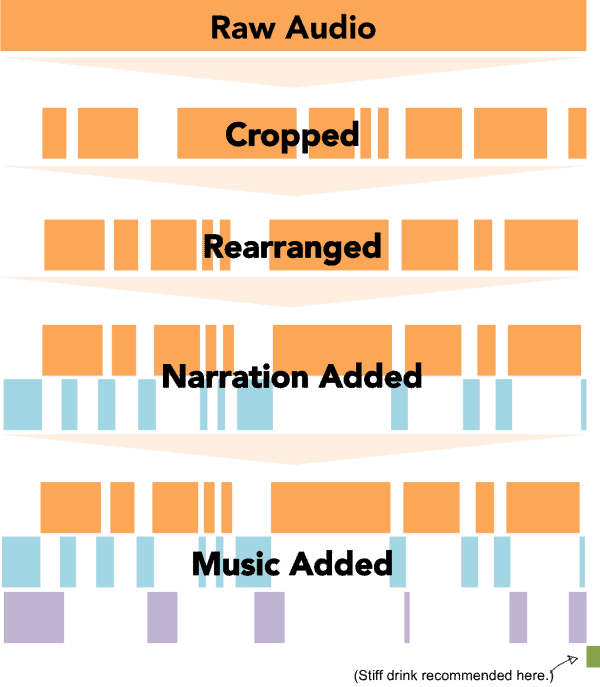 How to approach editing a narrative podcast episode.
How to approach editing a narrative podcast episode.

